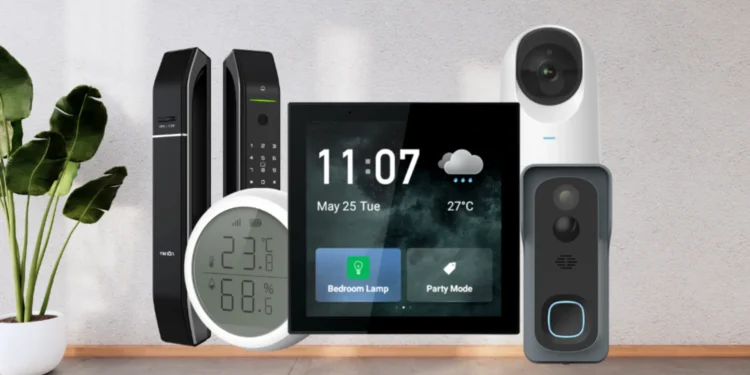Smart home technology has revolutionized the way we live, bringing efficiency, security, and convenience right to our fingertips. But while devices like smart thermostats, lights, and plugs are designed for automation and ease, they can sometimes lead to unexpected spikes in energy consumption if not used wisely. Fortunately, by applying specific strategies tailored to these gadgets, homeowners can strike the perfect balance between comfort and energy efficiency. In this long-form guide, we’ll explore the top 100 energy-saving tips across various categories of smart devices, helping you make the most of your connected home while cutting down on energy costs. Each group of tips is organized by device type or strategy, starting with one of the most powerful energy managers in any smart home: the smart thermostat.
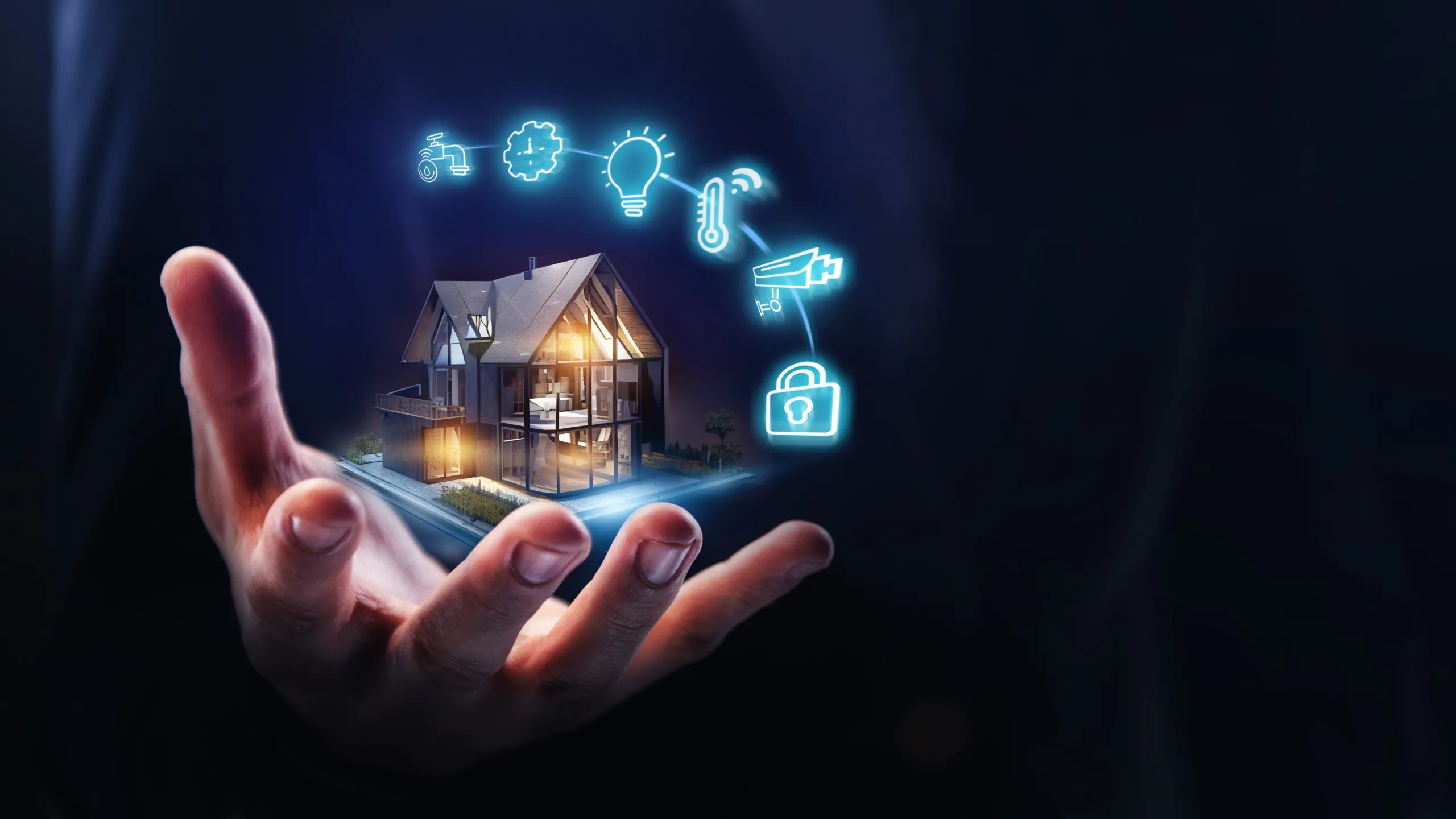
Smart Thermostat Optimization Tips
Smart thermostats are perhaps the most impactful energy-saving devices in the modern home. These devices are built to automate temperature control, adapt to user behavior, and reduce unnecessary heating or cooling—all with minimal effort from the homeowner. However, unlocking their full energy-saving potential requires a thoughtful setup and consistent use of their features. Here are ten detailed tips for getting the most energy savings from your smart thermostat.
-
Set Optimal Temperature Ranges
Aim for a thermostat setting between 68°F to 72°F (20°C to 22°C) in winter, and 75°F to 78°F (24°C to 26°C) in summer. These ranges strike a balance between comfort and conservation. Every degree of temperature adjustment can cut energy consumption by up to 3%. -
Utilize Scheduling Features
Program your thermostat to align with your daily routines. Lower the temperature when you’re sleeping or away at work, and let it rise gradually before you return home. This not only saves energy but maintains a consistent indoor climate. -
Enable Geofencing or Location Awareness
Many smart thermostats allow integration with your smartphone’s location. This means your system can automatically shift to an energy-saving mode when you leave and resume comfort settings upon your return—no manual adjustment needed. -
Regularly Update the Thermostat Firmware
Manufacturers often release updates that enhance performance, fix bugs, or introduce new energy-saving features. Keeping your device updated ensures you’re always getting the best performance and efficiency possible. -
Integrate with Window and Door Sensors
By linking your thermostat to smart sensors, it can respond more accurately to open windows or exterior doors. If a window is open in a heated room, the thermostat can pause heating to prevent energy waste. -
Use the Energy Reports and Analytics
Review the weekly or monthly energy usage reports provided by your thermostat. These insights help identify inefficient settings, patterns of waste, or opportunities to improve your energy profile. -
Turn On Adaptive Learning
Many smart thermostats feature a learning mode where the device observes your temperature preferences and daily movements. Over time, it can adjust settings automatically—providing both comfort and optimized energy use. -
Set Vacation or Away Modes
When traveling or during extended periods away from home, make sure to activate the “Vacation” or “Eco” mode. This prevents unnecessary heating or cooling and ensures you’re not wasting energy when no one’s home. -
Avoid Frequent Manual Overrides
Constantly changing settings manually can confuse the learning algorithm. Try to stick to the programmed schedule and let the smart features do their job. -
Place the Thermostat in a Central, Neutral Zone
Avoid installing the thermostat near drafts, direct sunlight, or heat-producing appliances. Incorrect placement can lead to inaccurate readings and inefficient temperature adjustments.
This first set of tips alone can significantly reduce your heating and cooling bills—which make up about 40–50% of the average home’s total energy consumption. A well-optimized smart thermostat can trim those costs down while maintaining your comfort year-round. The key is to use these devices proactively rather than passively, allowing their smart features to truly shine.
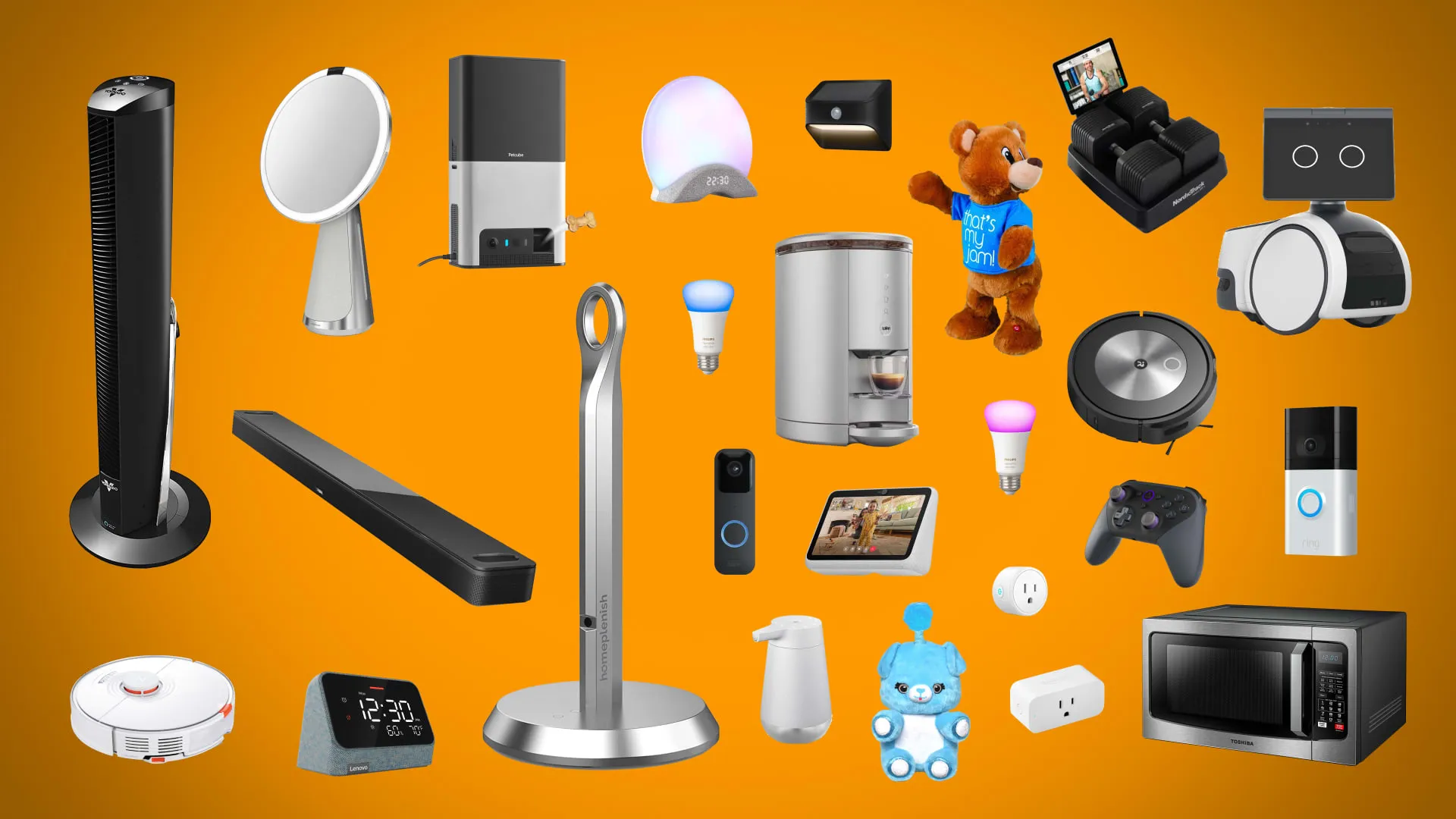
Smart Lighting Efficiency Tips
Smart lighting systems are among the most accessible and popular smart home upgrades, offering customizable brightness, color temperature, and scheduling. However, their energy-saving potential is often underutilized. With the right strategies, smart bulbs and switches can dramatically reduce your electricity usage, especially in homes where lights are often left on unnecessarily. Here’s how to make your smart lighting work smarter, not harder.
-
Use LED Smart Bulbs Instead of Incandescents
First and foremost, always opt for LED-based smart bulbs. They consume up to 80% less energy than traditional incandescent bulbs and last significantly longer, offering both immediate and long-term savings. -
Set Lighting Schedules Based on Daily Routines
Program lights to turn off when not needed—like during work hours or when you’re asleep. Scheduled automation ensures lights aren’t wasting energy when no one’s around to benefit. -
Use Motion Sensors in Low-Traffic Areas
Rooms like hallways, laundry rooms, and bathrooms often have lights left on unnecessarily. Smart motion sensors can automatically switch lights off when no movement is detected, reducing passive energy waste. -
Enable Dimming Functions Automatically
Smart lights with dimming capabilities should be programmed to operate at reduced brightness levels during early mornings or late evenings. Lower brightness means lower energy draw, and you’ll barely notice the difference in illumination. -
Use Smart Light Groups for Zones
Instead of turning on all lights individually, create zones or room-specific groups that can be controlled together. This allows for better management and fewer forgotten lights left on. -
Control Lights Remotely via App or Voice
Forgot to turn off the lights? No worries—use your smart home app or a voice assistant like Alexa or Google Assistant to switch them off from anywhere. This feature can be a game changer when you’re traveling or on the go. -
Use Light Scenes for Functionality and Mood
Setting “scenes” like “Reading Mode” or “Relax Mode” adjusts lights to the most efficient brightness and color settings for the activity—reducing excess use without sacrificing atmosphere. -
Enable Sunrise and Sunset Automation
Sync your lights with your local sunrise and sunset times to automatically turn them off during daylight hours and on when it gets dark—maximizing natural light and minimizing electricity use. -
Turn Off Status Lights on Smart Bulbs
Some smart bulbs have small indicator lights that remain on continuously. While minimal in power draw, turning off these status lights across dozens of bulbs can add up to annual savings. -
Monitor Usage Reports and Adjust Accordingly
Many smart lighting platforms provide detailed analytics on usage. Use these reports to identify overused rooms or inefficient patterns and adjust accordingly to reduce excess consumption.
By implementing these smart lighting practices, homeowners can enjoy full control over their home ambiance while simultaneously minimizing energy usage. Whether it’s automating dimming schedules or optimizing bulb types, smart lighting is an easy win for energy-conscious living. Remember, small adjustments—like using motion sensors or dimmer presets—can lead to significant annual savings when scaled across an entire home.
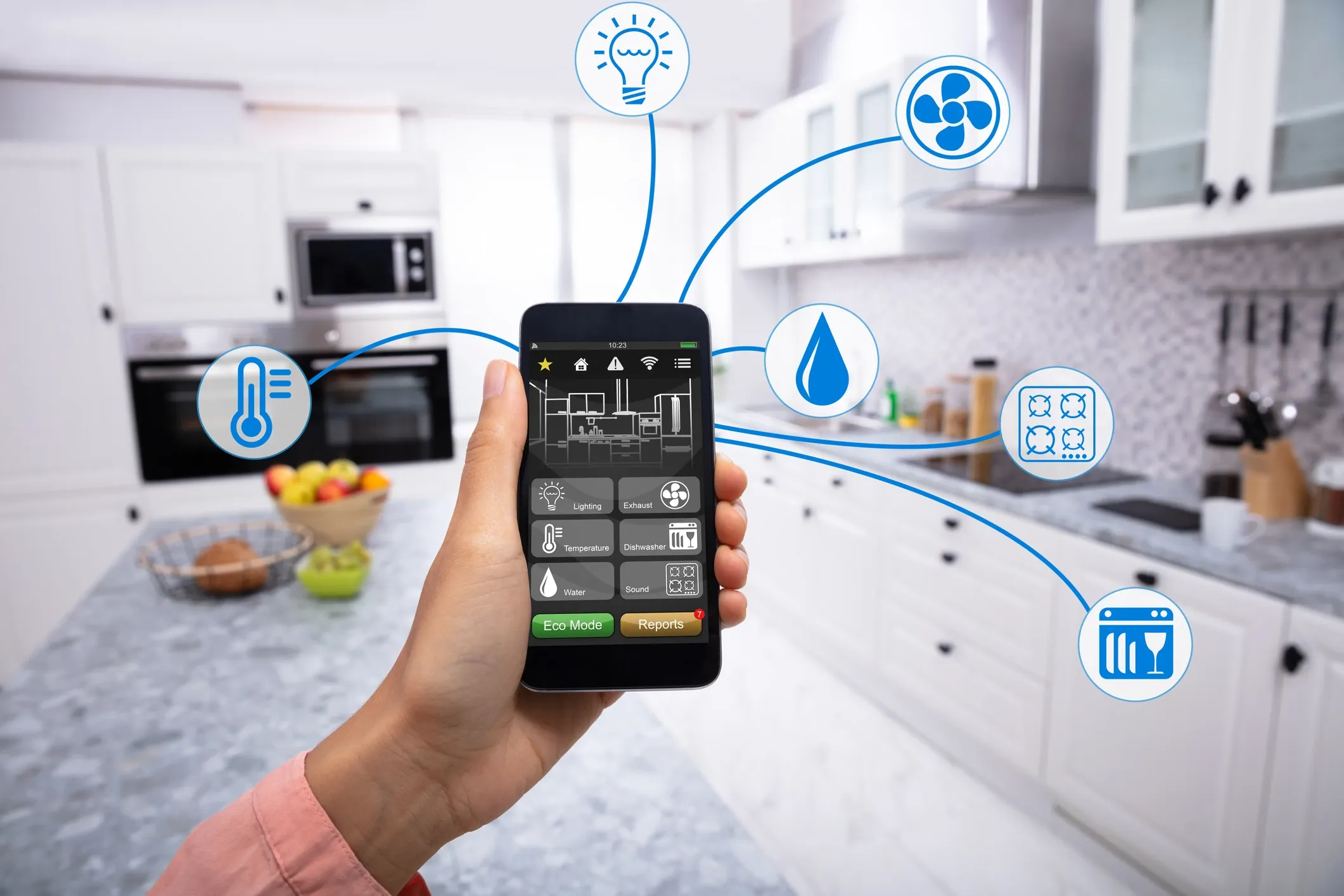
Smart Power Plugs & Outlet Efficiency Tips
Smart plugs and outlets allow you to control non-smart devices through your smartphone or voice assistant, offering a convenient way to manage energy use without upgrading all your appliances. When used effectively, they can dramatically reduce idle energy draw and ensure your devices only use power when they truly need to. Here’s how to get the most out of them.
-
Use Smart Plugs for High-Standby Devices
Identify electronics that consume standby power—like TVs, coffee makers, printers, and microwaves—and connect them to smart plugs. These devices often draw power 24/7 unless physically unplugged. -
Schedule Plug Shutoffs Overnight
Many electronics aren’t used between midnight and early morning. Schedule smart plugs to cut power during these hours to avoid unnecessary electricity use. -
Group Devices into “Power Zones”
Combine multiple electronics into one smart plug group—like all entertainment center components—so you can switch them off simultaneously with one command. -
Turn Off Chargers When Not in Use
Phone and laptop chargers draw small amounts of power even when nothing is charging. Use smart plugs to disable these outlets automatically when not needed. -
Use Energy-Monitoring Smart Plugs
Choose plugs that track real-time energy usage. This data can reveal which devices are energy hogs and help you make informed decisions about usage and replacement. -
Integrate with Voice Assistants for Convenience
Control outlets with simple commands like “Alexa, turn off the TV plug” to avoid leaving devices running unnecessarily, especially at bedtime or when leaving home. -
Use Vacation Mode to Cut All Plugs
When going away, activate a preset scene that turns off all non-essential smart plugs, reducing idle power draw from multiple devices at once. -
Don’t Use Smart Plugs on Essential Appliances
Avoid placing critical appliances—like refrigerators or medical equipment—on smart plugs that could accidentally be turned off. Focus on non-essential or entertainment devices. -
Automate Desktop or Office Setups
Create an “Office On/Off” plug schedule to power down printers, monitors, and desk lamps during evenings or weekends to reduce commercial or home office energy waste. -
Label Your Smart Plugs Clearly in the App
It may seem basic, but organizing and labeling each plug in your app (“Living Room Lamp,” “TV Stand,” etc.) makes it far easier to manage and turn off the correct devices quickly.
While individually these devices may not seem significant, combined they offer a powerful way to reduce always-on power consumption, also known as vampire or phantom energy. If every home in the U.S. eliminated just 10% of their standby power use, it would save billions of kilowatt-hours each year. Smart plugs make that easy—with automation, remote control, and usage tracking at your fingertips.
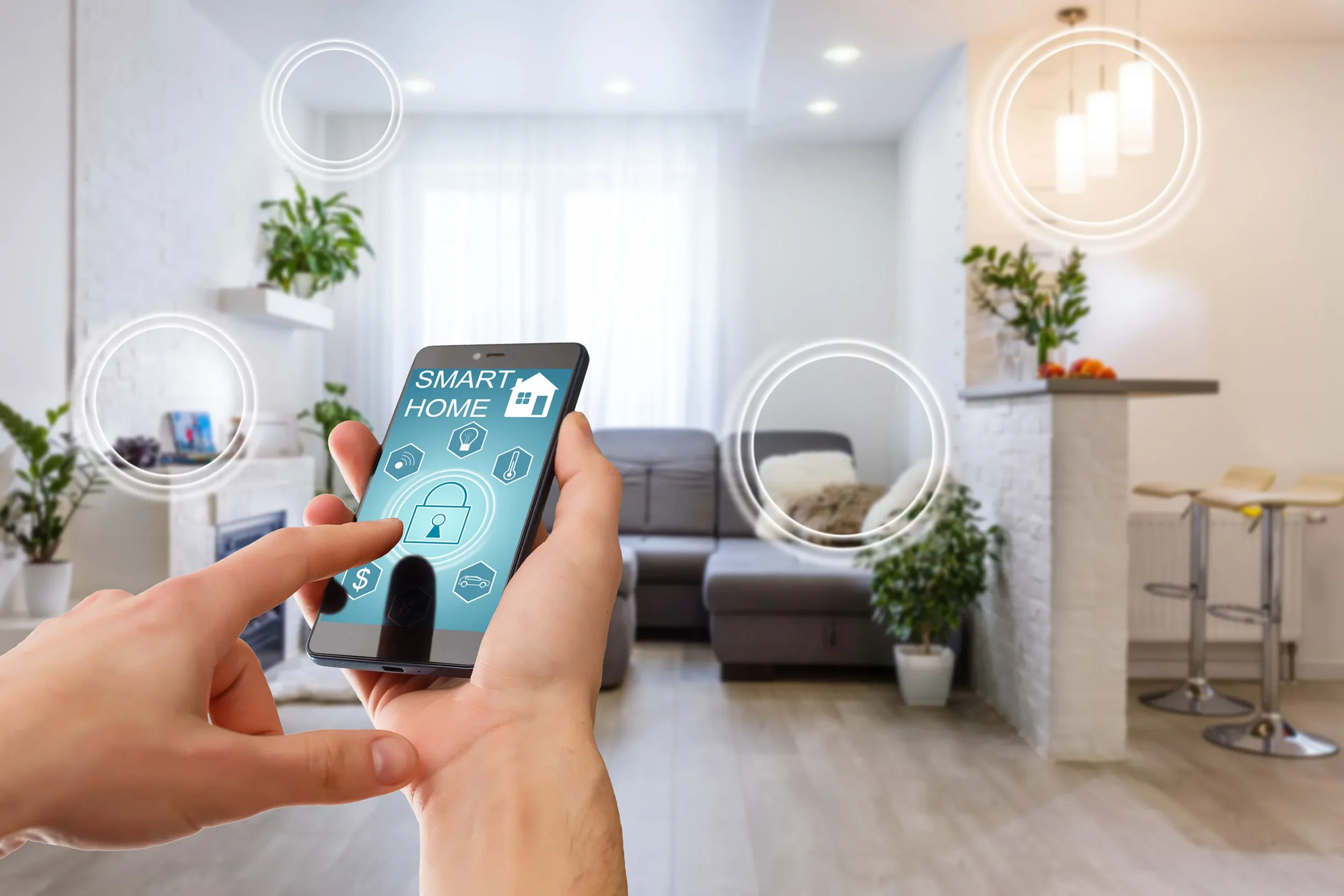
Smart Appliance Energy-Saving Tips
Smart appliances—like refrigerators, dishwashers, washers, dryers, and even ovens—are increasingly common in modern households. These appliances come packed with features designed to reduce energy and water usage, improve performance, and provide user insights. Still, many homeowners don’t take full advantage of their efficiency potential. Here are 10 targeted tips to ensure your smart appliances are contributing to energy savings—not just convenience.
-
Run Appliances During Off-Peak Hours
Many smart washers, dryers, and dishwashers let you delay cycles. Program them to operate during off-peak energy hours (typically late evening or early morning) when electricity rates are lower and grid demand is reduced. -
Activate Eco or Energy-Saving Modes
Most smart appliances have an “Eco” or “Energy Saver” setting. These modes may slightly extend operation time but significantly reduce energy and water consumption, especially for dishwashers and laundry machines. -
Avoid Overloading Washers and Dryers
While it’s tempting to squeeze in more, overfilling forces your machines to work harder and less efficiently. Smart load sensors may adjust water and power use, but you’ll get better results—and less wear—at recommended capacities. -
Monitor Energy Usage Through the App
Smart appliances often offer real-time energy monitoring. Use these tools to compare usage patterns, identify inefficient habits, and modify your behavior to save energy long-term. -
Schedule Automatic Defrosting for Fridges
Some smart refrigerators allow you to set defrost cycles at optimal times. Scheduling this during off-peak hours reduces strain on the grid and keeps your appliance running smoothly. -
Keep Refrigerator Coils and Vents Clean
Even the smartest fridge can’t work efficiently with dust-clogged coils. Set maintenance reminders via the app or calendar to clean these every 3–6 months. -
Turn Off Features You Don’t Use
Many smart fridges have constant-display screens, cameras, or Wi-Fi always-on functions. Disable non-essential features to reduce power draw if they’re not actively benefiting you. -
Use Smart Oven Preheat Alerts Efficiently
Avoid turning the oven on too early. Use app alerts to know exactly when it’s preheated so you can load it promptly and avoid energy waste. -
Dry Clothes in Back-to-Back Loads
If you’re doing multiple loads, run them consecutively. This way, your dryer stays warm between loads, reducing the energy needed to heat it up each time. -
Turn Off Appliances Remotely When Needed
Many smart appliances can be turned off from anywhere via mobile app. If you left something running by mistake, this feature can save power and give peace of mind.
With proper use, smart appliances can help you achieve efficiency levels far beyond their traditional counterparts. Their energy-saving features are often underused, but with just a few tweaks to schedules and settings, these high-consumption devices become champions of conservation. The added benefit? They also tend to last longer when not overworked, saving you money on replacements and repairs.
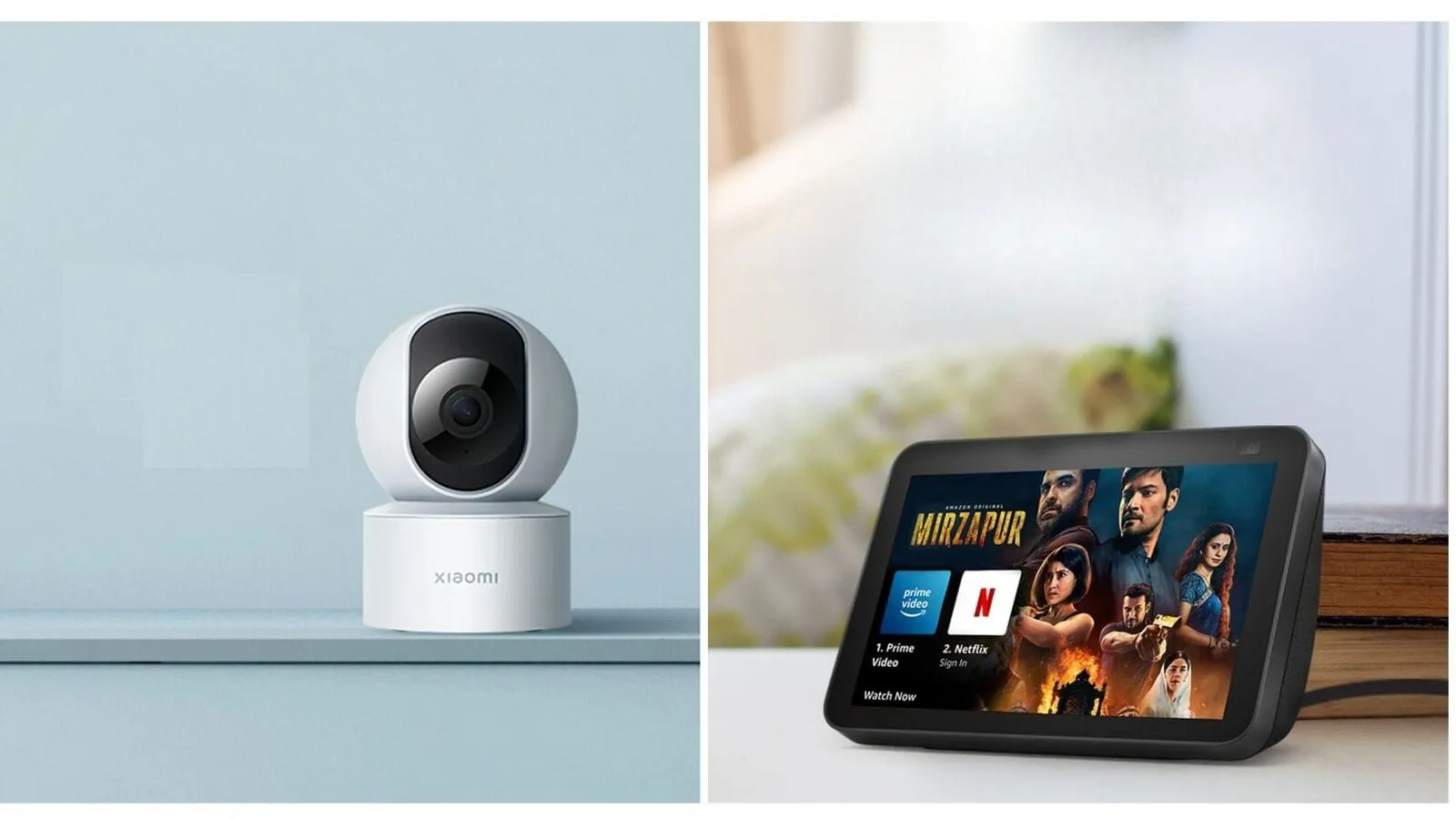
Smart Home Security & Surveillance Efficiency Tips
Security devices are often always-on for safety reasons, but that doesn’t mean they have to be always inefficient. With careful calibration and thoughtful setup, your smart security system can function reliably while still keeping energy usage in check. Here’s how to do it effectively.
-
Use Motion-Activated Recording Only
Instead of 24/7 recording, configure security cameras to activate only when motion is detected. This saves data, reduces cloud storage costs, and cuts down on energy use. -
Set Custom Surveillance Zones
Create activity zones within your camera’s field of view to avoid unnecessary recordings triggered by moving trees, pets, or passing traffic. This keeps the system focused and reduces unnecessary power draw. -
Optimize Night Vision Settings
If your camera’s infrared mode runs all night, consider lowering sensitivity or disabling it in well-lit areas. Not all outdoor spaces require full night vision activation, especially if streetlights are nearby. -
Use Power-Saving Modes on Alarms
Many smart alarm systems include eco or low-power modes. These limit connectivity to essentials without sacrificing critical alerts and function during extended away periods. -
Control Lighting Linked to Motion Sensors
Avoid having security-linked floodlights stay on for too long. Configure timers to shut them off after 30–60 seconds of inactivity to conserve electricity. -
Set Smart Doorbells to Idle Efficiently
Doorbell cameras don’t need to be continuously active. Adjust settings so they only “wake” when someone is at the door or when motion is detected directly in front. -
Use Solar-Powered Cameras Where Possible
For outdoor security, solar-powered smart cameras are a game-changer. They eliminate wired energy draw and function sustainably with proper sunlight exposure. -
Monitor System Activity Through the App
Use real-time logs and energy usage data to identify overactive zones or sensors. You might find that a driveway cam records thousands of events a week—many of which are unnecessary. -
Reduce Ping Frequency for Remote Sensors
Some door and window sensors regularly “ping” the base station to confirm their status. Adjusting the ping frequency can reduce the energy load, especially in large homes with many sensors. -
Disable Unused Alerts or Monitoring Schedules
If you’re home during certain hours, disable push alerts and unnecessary monitoring features to reduce background system activity and energy drain.
By applying these optimizations, your smart security system continues to protect your home while consuming less energy and data. It’s about finding that sweet spot between vigilance and efficiency—allowing your system to be alert only when needed, without constant high-power demand.
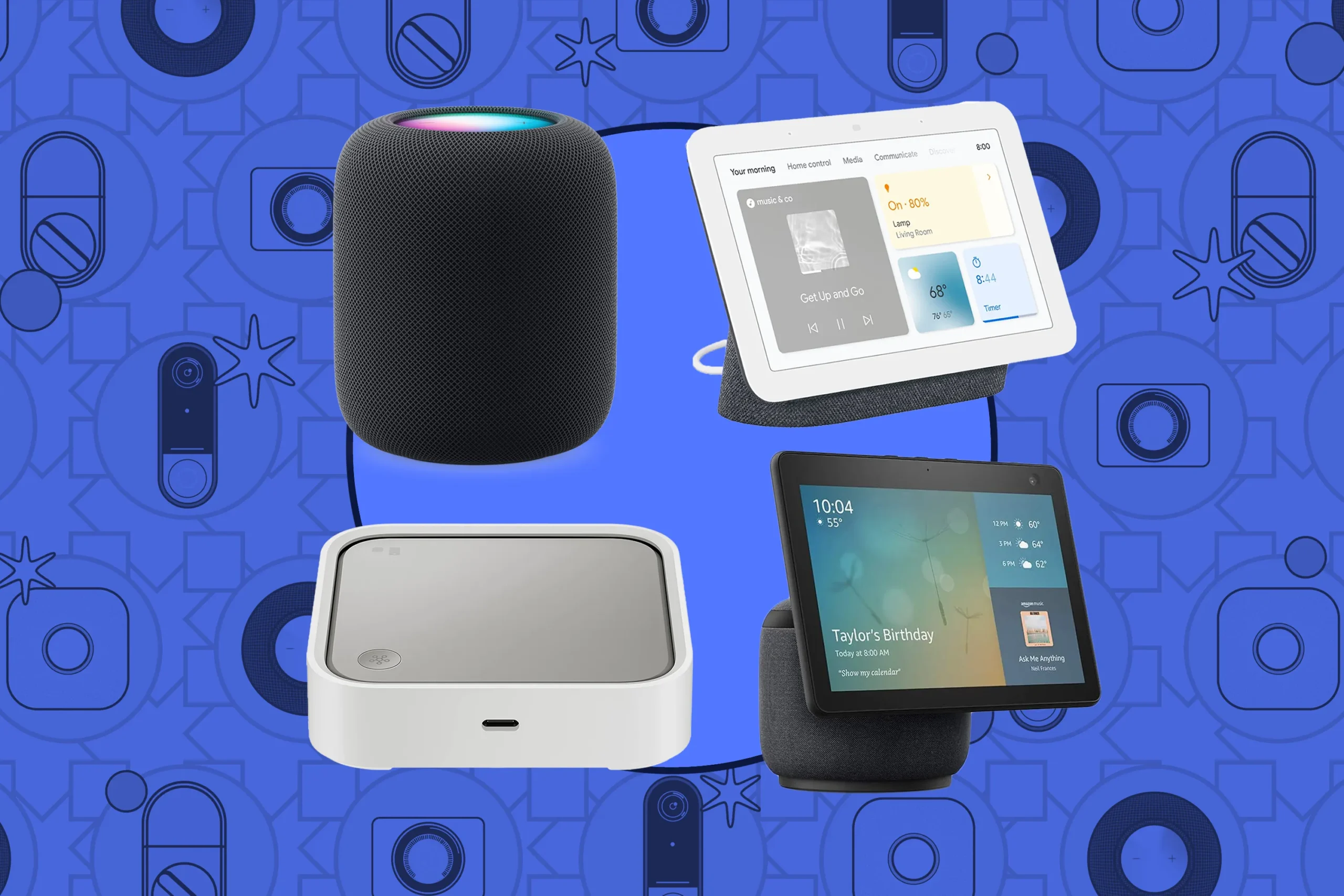
Smart Home Entertainment Efficiency Tips
Home entertainment devices have become central in today’s smart homes. But because these gadgets often remain in standby mode and are used for extended periods, they can significantly impact your energy bill. By applying smarter control, automation, and usage habits, you can still enjoy your favorite shows, games, and music—without wasting unnecessary power.
-
Disable “Always-On” Voice Listening on TVs
Many smart TVs listen for voice commands 24/7. Disabling this feature, especially if you don’t use voice control regularly, reduces constant energy draw and protects privacy. -
Enable Power-Saving Mode on Consoles and TVs
Gaming consoles and modern TVs include energy-saving modes that limit brightness, reduce processing power, and lower background activity. Always enable these in your settings menu. -
Turn Off Auto-Play on Streaming Services
Platforms like Netflix or YouTube can automatically play content even when no one’s watching. Disabling this can reduce the time your screen stays on unnecessarily. -
Consolidate Devices with a Universal Remote App
Many smart homes have multiple remotes or hubs running. Using a smartphone-based universal app can reduce idle energy usage from separate controllers. -
Schedule Daily Auto Shut-Off Times
If you often fall asleep with the TV on or forget to power down your gear, set a timer or schedule to turn everything off after a set time (e.g., midnight). -
Connect Entertainment Gear to Smart Plugs
Use a smart plug to control your entire entertainment station—TV, speaker, console, and cable box—turning them off together with a single tap or voice command when not in use. -
Use Ambient Light Settings to Reduce Brightness
TVs and monitors often have adaptive brightness settings based on room lighting. Activating this reduces power usage and is easier on the eyes. -
Unplug Streaming Devices When Idle
Devices like Roku, Fire Stick, or Apple TV can draw power even when not streaming. If they’re not in daily use, unplug or disable them via a smart plug. -
Avoid Leaving Consoles in Rest or Instant-On Mode
PlayStation and Xbox have modes that allow instant resume, but they draw significant power while “off.” Use full shutdown instead when you’re done playing. -
Use External Sound Only When Needed
Soundbars and surround systems use more power than your TV’s built-in speakers. For casual viewing or news, skip the extra wattage and use the internal audio.
These small changes can have a major cumulative impact over time. Entertainment systems are typically used for several hours daily, and any optimization—whether it’s disabling features, adjusting habits, or using smart plugs—can shave real dollars off your monthly bill. The key takeaway: enjoy the entertainment, but let your system rest when you do.
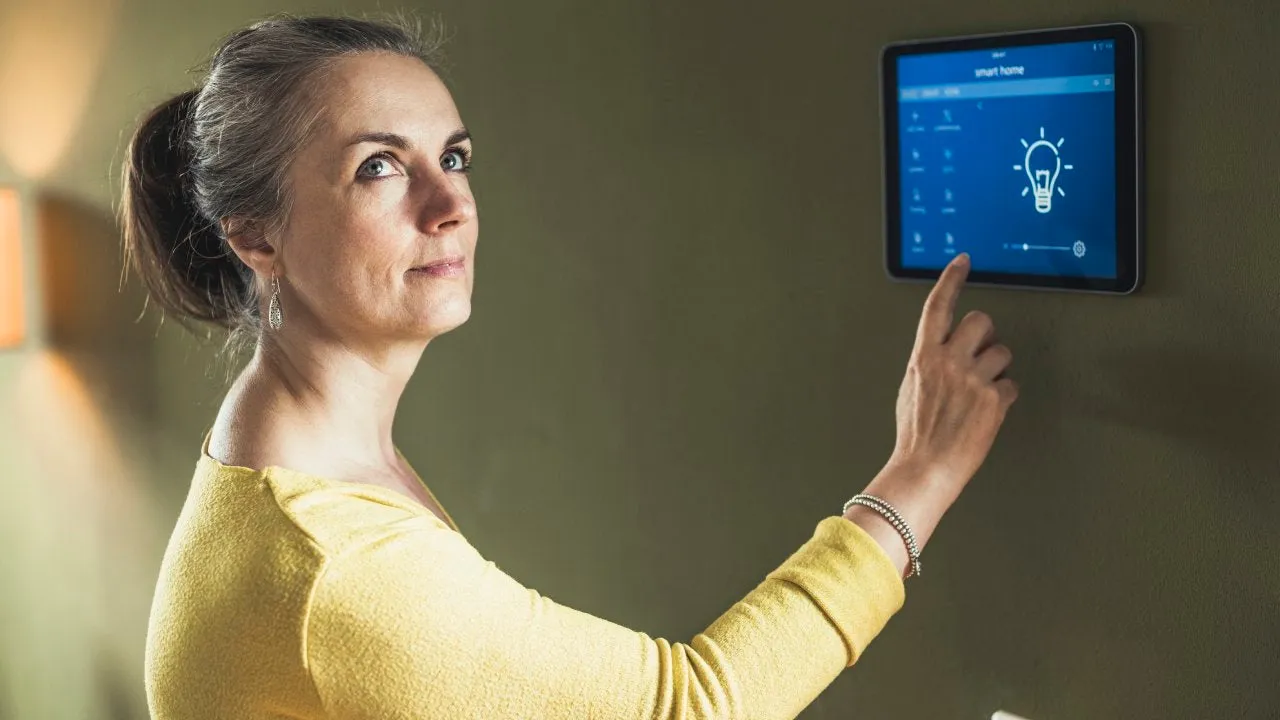
Smart Blinds, Curtains & Window Efficiency Tips
Your windows are a gateway for natural light and temperature changes. When managed properly using automated blinds or smart shades, they can help maintain ideal indoor temperatures, reduce HVAC load, and improve overall energy efficiency. Here’s how to maximize their potential.
-
Schedule Blinds to Close During Peak Sun Hours
During hot afternoons, program blinds to automatically close to block out solar heat and reduce air conditioning usage—especially for south- and west-facing windows. -
Open Shades Automatically on Cold Mornings
Use sunlight as a passive heating tool by scheduling blinds to open in the morning to naturally warm your home before turning on the heater. -
Sync Blinds with Smart Thermostat
Some ecosystems allow your thermostat to trigger blind positions based on temperature thresholds, reducing reliance on HVAC systems. -
Use Light Sensors for Real-Time Adjustments
Install light sensors that detect when direct sunlight is hitting your windows and trigger blinds to adjust automatically to reduce heat gain. -
Install Reflective or Insulated Smart Curtains
Choose materials that reflect UV rays or offer thermal insulation to minimize heat exchange, helping your HVAC system work less. -
Program Blinds to Open at Sunrise for Wake-Up Routine
Reduce reliance on artificial lights in the morning by using blinds that open with natural light, saving energy while waking you gently. -
Close Blinds During Winter Nights to Retain Heat
Prevent heat from escaping through window glass during the night by setting blinds to close automatically after sunset in winter months. -
Use Seasonal Scheduling for Blinds
Adjust blind automation based on seasonal daylight patterns to ensure optimal use of passive heating or cooling year-round. -
Use App Integration for Remote Adjustment
Forgot to close the shades before leaving for the day? Use your smartphone app to do it remotely and reduce daytime energy waste. -
Avoid Manual Override Unless Necessary
Allow your automation to work consistently. Constant manual changes can disrupt efficiency patterns and negate scheduled routines.
When integrated properly, smart window treatments are powerful passive energy tools that boost comfort, reduce heating/cooling needs, and make your home more responsive to the sun’s natural patterns—all while adding elegance and automation to your living space.
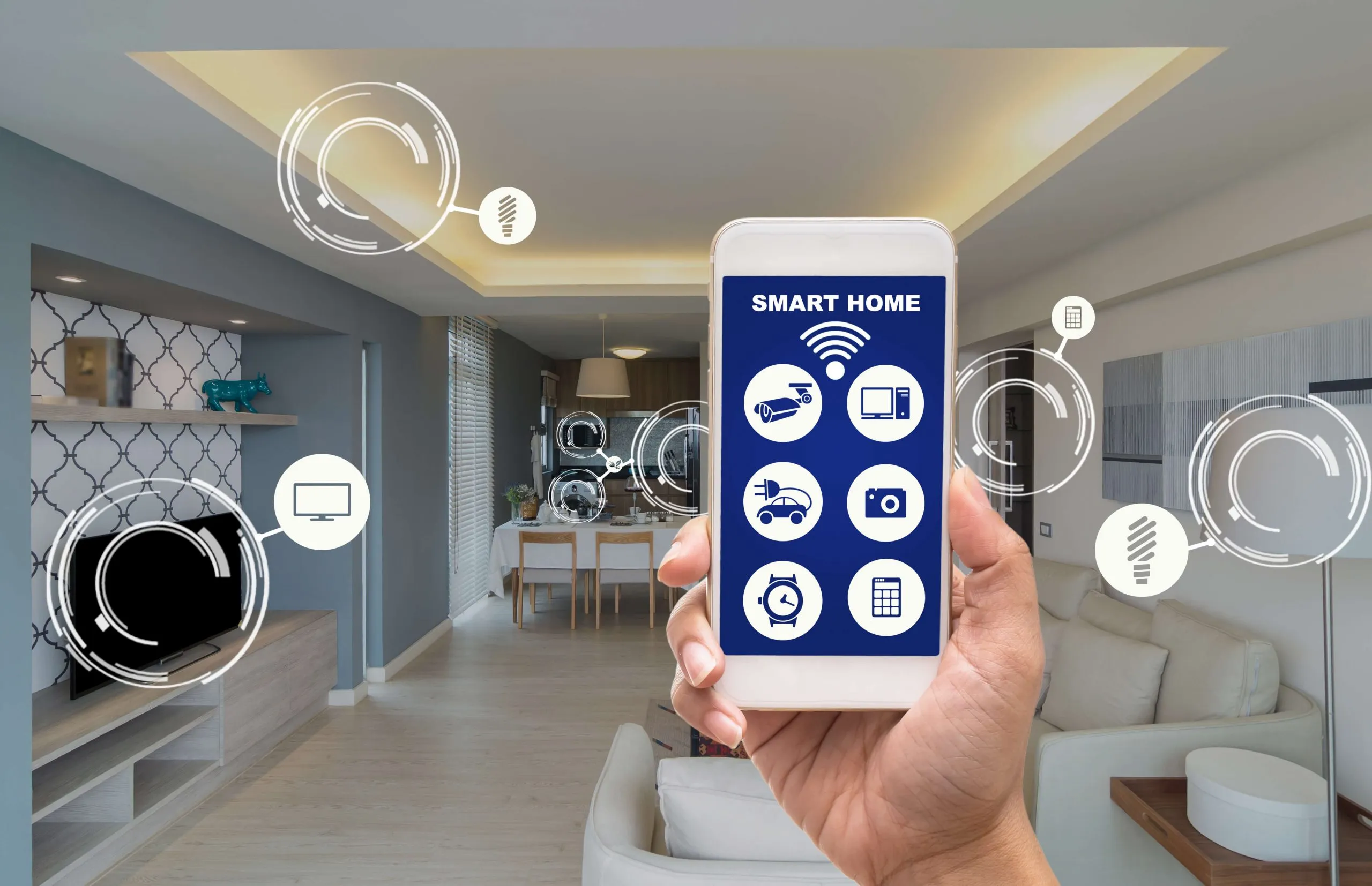
Smart Outdoor Systems & Energy-Saving Tips
The outdoors is often overlooked when it comes to energy efficiency, but smart irrigation, garden lighting, and outdoor systems can be optimized to save both electricity and water. Here’s how to green your backyard tech responsibly.
-
Install Smart Irrigation Systems with Weather Sync
Smart sprinklers that sync with local weather forecasts avoid watering when rain is expected, dramatically reducing water waste. -
Water Your Lawn in Early Morning
Schedule irrigation for early hours to reduce evaporation. Smart systems can automate this timing precisely. -
Use Moisture Sensors in Soil
These sensors help detect when your garden actually needs water, preventing unnecessary watering cycles. -
Group Outdoor Lights by Zones
Create specific groups like “Pathway,” “Porch,” and “Backyard” so that you only light the areas in use. -
Use Motion-Activated Security Lights Only
Set floodlights or porch lights to activate via motion sensor rather than running continuously overnight. -
Adjust Outdoor Light Brightness Levels
Dimming LED garden or architectural lighting by 20–30% is usually visually unnoticeable but significantly reduces power draw. -
Use Solar-Powered Garden Lights
These require no grid power and recharge during the day—perfect for low-maintenance lighting. -
Integrate Lighting with Home Modes
Set lights to turn off when your smart home switches to “Away” or “Sleep” mode to reduce outdoor energy use when not needed. -
Use Timer-Controlled Smart Plugs Outdoors
Outdoor-rated smart plugs can turn off water features, heaters, or decorative lights on a schedule. -
Avoid Overlapping Water Zones in Irrigation Layout
Customize sprinkler zones to avoid overwatering or double-coverage areas that waste water and energy.
By optimizing your outdoor smart systems, you’re not just creating a more beautiful and safe home—you’re cutting down on resource use and saving money, especially during high-consumption seasons like summer and spring.
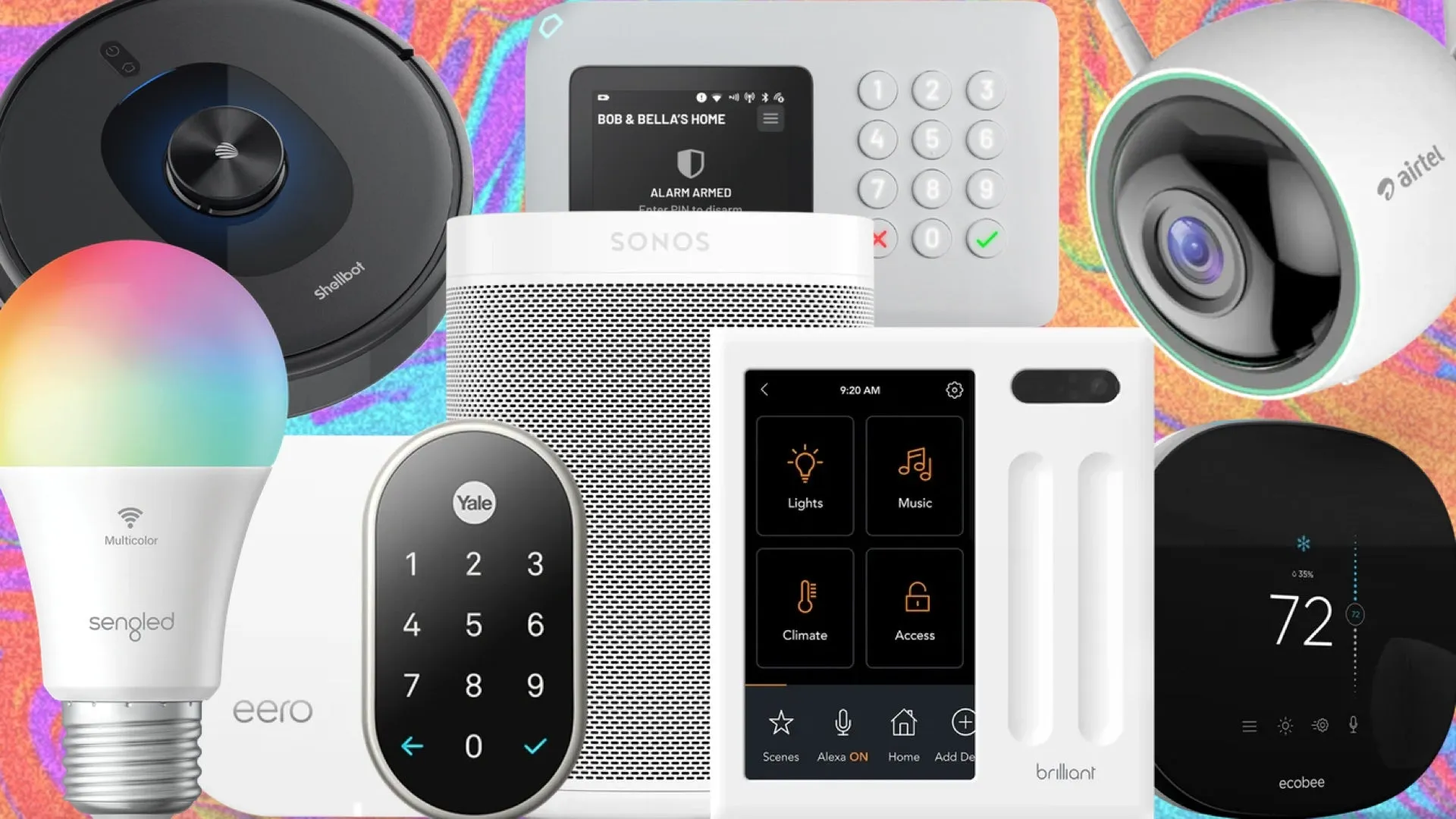
Whole-Home Automation & Ecosystem Efficiency Tips
If your smart home includes multiple connected devices, a home hub or ecosystem like Google Home, Amazon Alexa, or Apple HomeKit can unify them under one control system. Leveraging automation across devices can multiply your energy savings and simplify your life. These tips focus on maximizing energy efficiency at the system level.
-
Create a Home Energy Automation Routine
Set up custom “energy saver” scenes that dim lights, adjust thermostats, turn off plugs, and close blinds with one command or based on a schedule. -
Enable “Away Mode” Automation When You Leave
Use geofencing or a single voice command to activate a whole-home energy-saving mode when no one is home, powering down non-essentials. -
Automate Based on Weather Conditions
Connect your smart thermostat, blinds, and lights to a weather app so that your home adjusts in real-time to changes in sunlight, temperature, or humidity. -
Integrate Sensors with Multiple Systems
Motion, contact, and ambient light sensors can control lights, blinds, and HVAC zones simultaneously for efficient multi-device interaction. -
Use Smart Scenes for Peak Hours
If you’re on a time-of-use electricity plan, create a scene that limits high-consumption devices during peak energy pricing windows. -
Monitor Ecosystem-Wide Energy Reports
Use dashboards like Home Assistant, Samsung SmartThings, or third-party apps to analyze energy use across your entire home. -
Link Appliances to Home Modes
Delay or adjust appliance usage (like dishwashers or washers) to run only when your home is in a designated low-energy state. -
Ensure All Devices Are on the Latest Firmware
Unified software updates improve compatibility, security, and efficiency across platforms. -
Use Voice Commands for Batch Energy Tasks
Train your smart assistant to execute energy-saving routines like “Shut down the house” or “Night mode” via a single voice prompt. -
Audit Your Smart Ecosystem Every Season
As your habits and devices change, review and update automations quarterly to ensure they remain relevant and effective.
This kind of broad, system-wide strategy multiplies the effect of each individual device’s energy-saving potential. The result is a truly intelligent home that doesn’t just respond—but anticipates your energy needs.
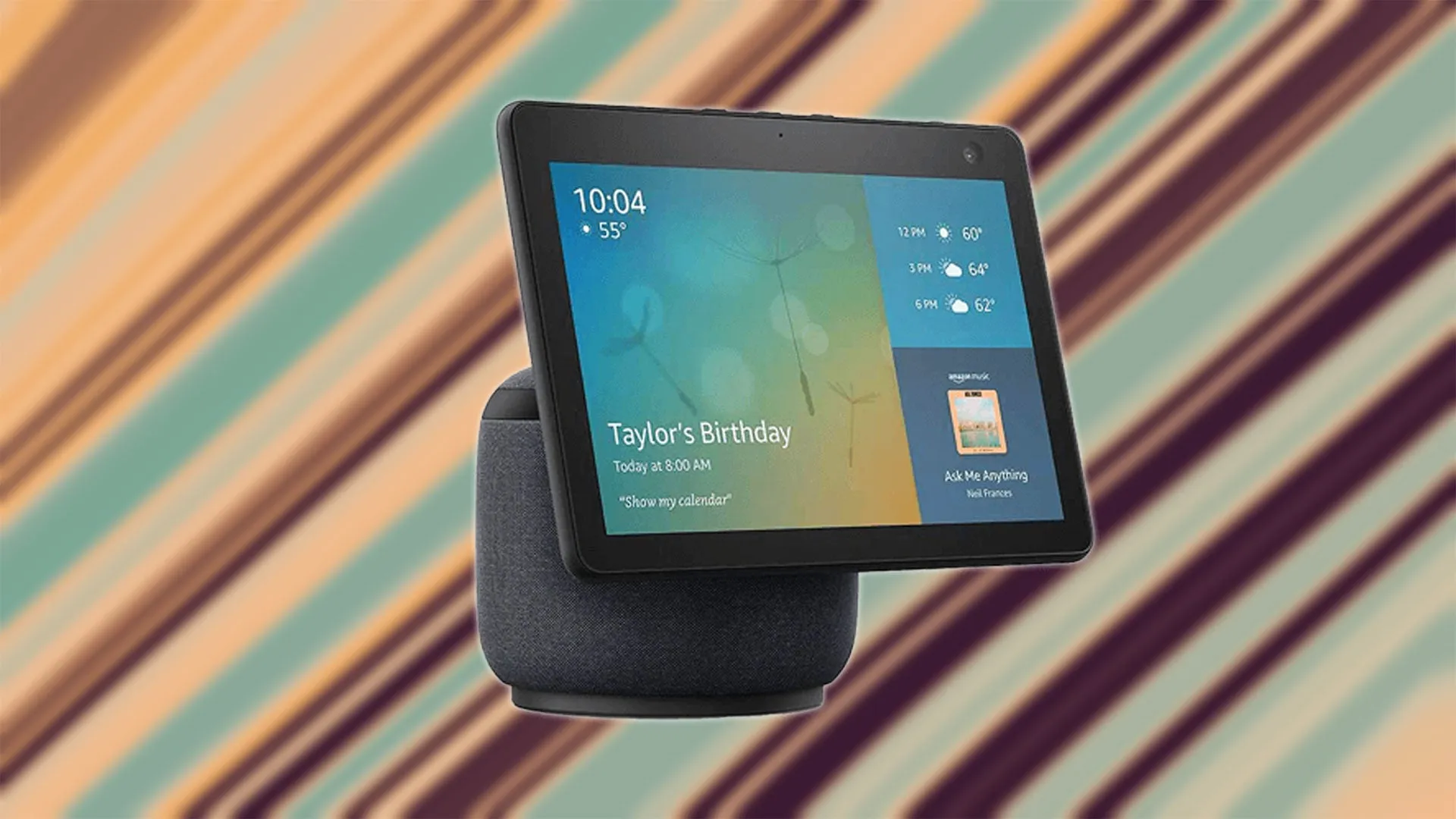
Everyday Smart Home Habits & Behavioral Efficiency
Even the most high-tech smart home can still waste energy if the homeowner’s habits aren’t aligned with efficiency. These final tips focus on behavioral patterns—the human side of the smart home equation.
-
Log in Weekly to Review Usage Stats
Make it a habit to spend 5 minutes a week checking energy reports to catch trends or anomalies early. -
Set Efficiency Goals and Track Them
Use built-in app dashboards or third-party apps like Sense or EnergyHub to set monthly or seasonal energy-saving goals. -
Educate Household Members on Smart Features
Ensure everyone knows how to use the system correctly. Kids and guests should know how to trigger energy-saving scenes. -
Unplug or Disable Old “Dumb” Devices
Replace or remove older electronics that can’t be monitored or controlled through your smart ecosystem—they often draw more phantom power. -
Avoid Feature Creep in Device Settings
Turning on every fancy feature can drain power unnecessarily. Keep settings minimal and purposeful. -
Combine Automations with Manual Check-Ins
Automation is great—but periodic manual inspections of routines can prevent waste from unexpected schedule or behavior changes. -
Avoid Over-Automation That Increases Usage
Be careful not to automate lights or devices to come on more often than needed just because you can. -
Use Eco Mode as Default on All Devices
Set new devices to energy-saving defaults right out of the box to avoid inflated baseline usage. -
Be Conscious of Voice Assistant Usage
Voice assistants running full-time with microphones and lights use small but continuous power—consider limiting always-on features. -
Celebrate Your Energy Wins
Whether it’s a lower power bill or fewer kilowatt-hours used, acknowledging progress keeps motivation high and habits sustainable.
When paired with the hardware and automation tips from earlier groups, these behavioral strategies bring everything together. Smart homes work best when humans and machines collaborate toward the same goal: a more efficient, cost-effective, and environmentally conscious lifestyle.
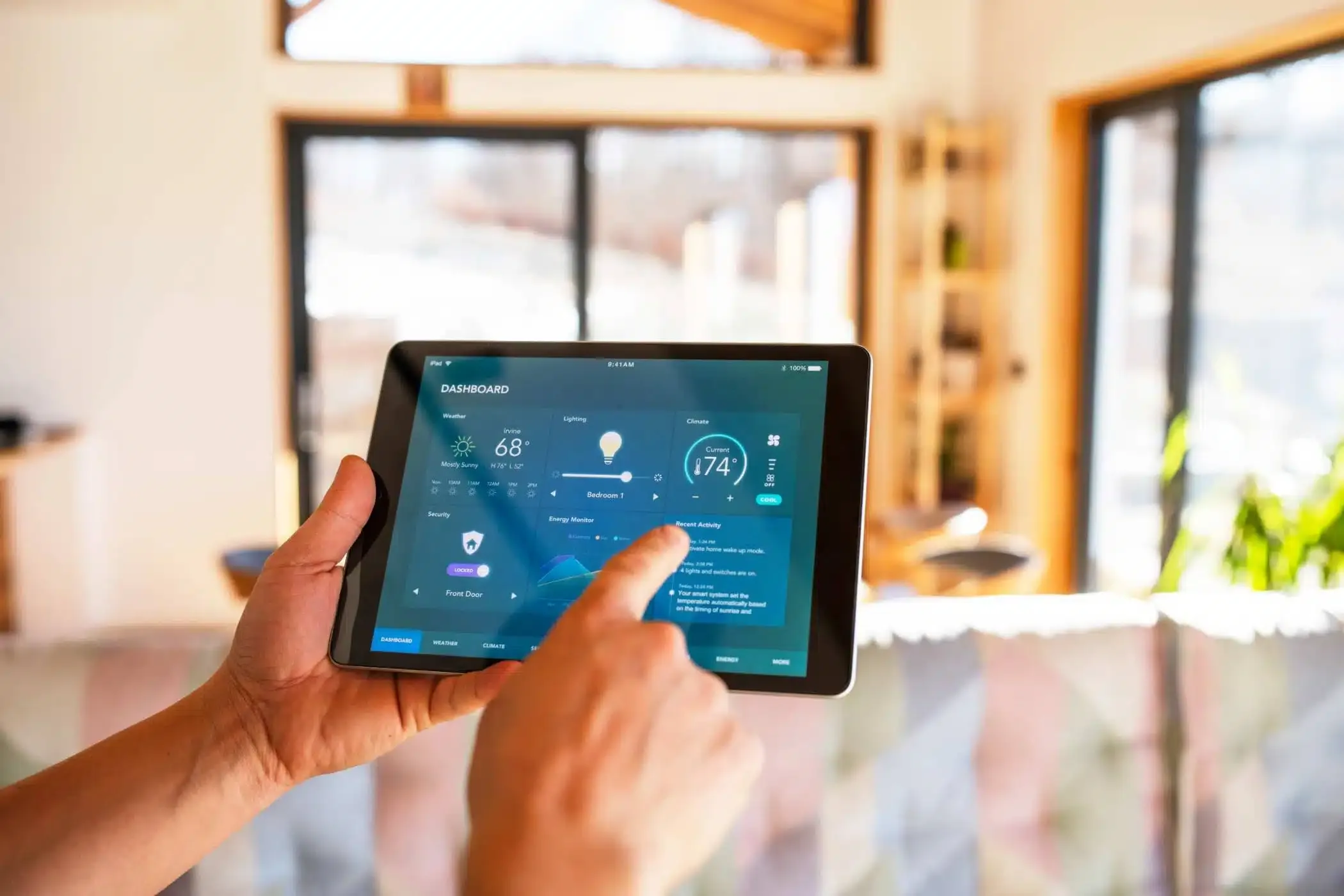
Smart homes are the future—but smart doesn’t just mean convenient or connected. It also means conscious. With the integration of technology into nearly every part of our homes—from thermostats and lights to appliances, blinds, and security systems—we have more power than ever to take control of our energy usage. But that power is only valuable when paired with intention.
These 100 energy-saving tips are more than just a checklist; they’re a mindset. Each group of strategies—whether focusing on smart thermostats, lighting, appliances, or whole-home automation—offers practical, actionable ways to trim down energy waste without sacrificing comfort or functionality. Even seemingly small changes, like dimming your lights, scheduling off-peak appliance cycles, or using voice commands to shut down entire rooms, can add up to substantial savings over time.
The beauty of smart technology lies in its adaptability. As your habits shift and your household grows or changes, your smart home can—and should—evolve with you. Regular check-ins, firmware updates, and a bit of creativity in automation go a long way in keeping your energy use aligned with your goals.

